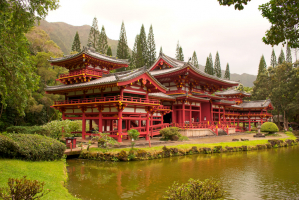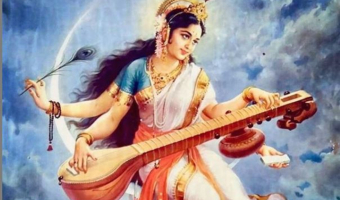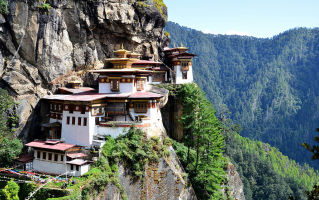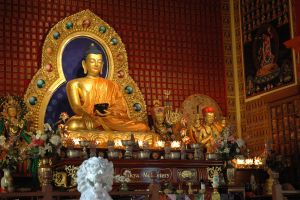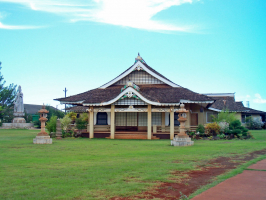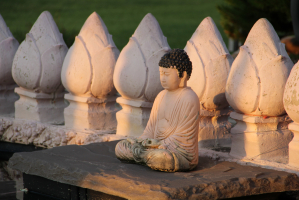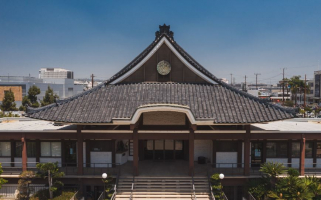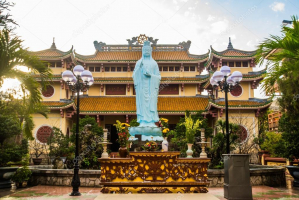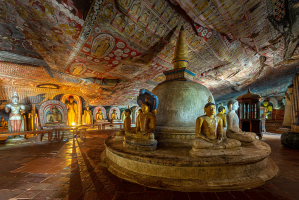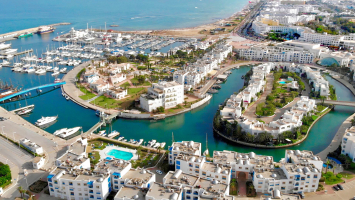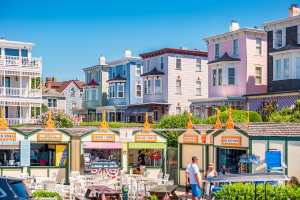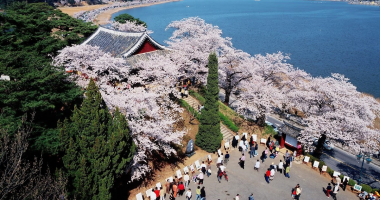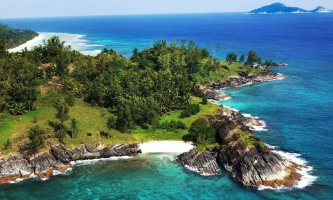Top 10 Most Beautiful Hindu Temples
Hinduism is one of the world's oldest religions, with about 900 million adherents around the globe. While the majority of Hindus dwell in India, they are also ... read more...found in South Asia, Nepal, Fiji, Mauritius, and Trinidad and Tobago. As a result, Hindu temples can be found not only in India, but also in these areas. So here is a selection of most beautiful Hindu temples from all over the world, standing proudly and bestowing blessings on humanity.
-
Angkor Wat is a temple complex in Cambodia that is the world's biggest religious monument, covering 162.6 hectares (1,626,000 m2; 402 acres). Angkor Wat was consecrated to Vishnu for the Khmer Empire, breaking with the Shaiva practice of prior kings. The construction of the temple took 27 years, and it was formerly known as "Varah Vishnu-lok." It went through various religious transformations, including conversions from Hinduism to Buddhism.
Suryavarman II, the Khmer King, erected it as his state temple and eventual mausoleum in Yaodharapura, the Khmer Empire's capital, in the early 12th century. Angkor Wat was consecrated to Vishnu, breaking with the Shaiva custom of past kings. The temple-mountain and the subsequent galleried temple are the two primary plans of Khmer temple construction that Angkor Wat incorporates. Within a moat more than 5 kilometers (3 miles) long and an outside wall 3.6 kilometers (2.2 miles) long are three rectangular galleries, each raised above the next, to resemble Mount Meru, the home of the devas in Hindu mythology. A quincunx of towers lies at the heart of the temple. Angkor Wat, unlike most Angkorian temples, is oriented west; experts disagree about the importance of this. The temple's architecture is recognized for its grandeur and harmony, as well as its large bas-reliefs and countless devatas gracing its walls.
Angkor Wat is the only temple on the site that has remained an important religious center since its creation, and it is also the best-preserved. The temple represents the pinnacle of Khmer architecture's high classical style. It has become a national symbol of Cambodia and is the country's most popular tourist attraction.Location: Siem Reap, Cambodia
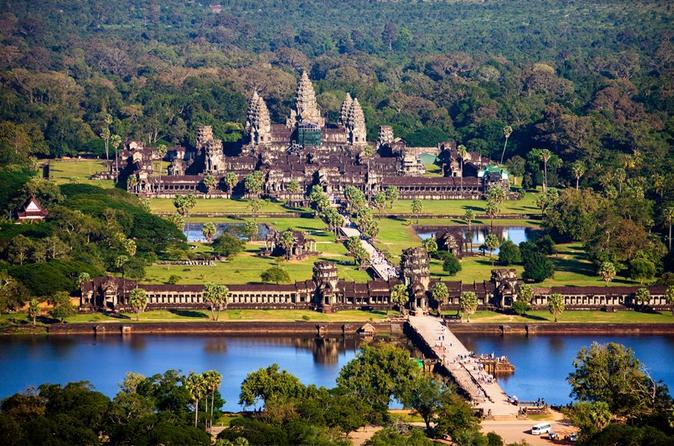
Photo: wikipedia 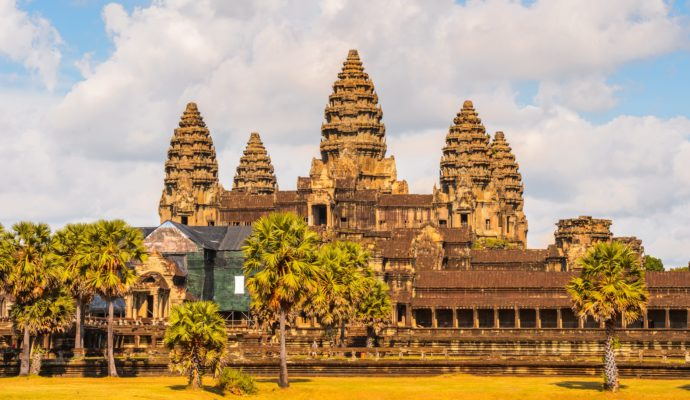
Photo: wikipedia -
Prambanan is a 9th-century Hindu temple compound in Yogyakarta's Special Region devoted to the Trimrti, God's manifestations as the Creator (Brahma), Preserver (Vishnu), and Destroyer (Vishnu) (Shiva). The temple compound lies about 17 kilometers (11 miles) northeast of Yogyakarta, on the border between the provinces of Central Java and Yogyakarta.
The temple compound, which is a UNESCO World Heritage Site, is Indonesia's largest Hindu temple site and Southeast Asia's second-largest after Angkor Wat. It is distinguished by its tall and pointed style, which is typical of Hindu architecture, as well as the central building, which stands 47 meters tall (154 feet) inside a massive complex of individual temples. The Prambanan temple complex originally consisted of 240 temple complexes, which exhibit the magnificence of ancient Java's Hindu art and architecture, as well as being considered a masterpiece of Indonesia's classical period. Prambanan is a popular tourist destination for people from all over the world.
Location: Bokoharjo, Prambanan, Sleman Regency, Special Region of Yogyakarta & Prambanan, Klaten Regency, Central Java, Indonesia.
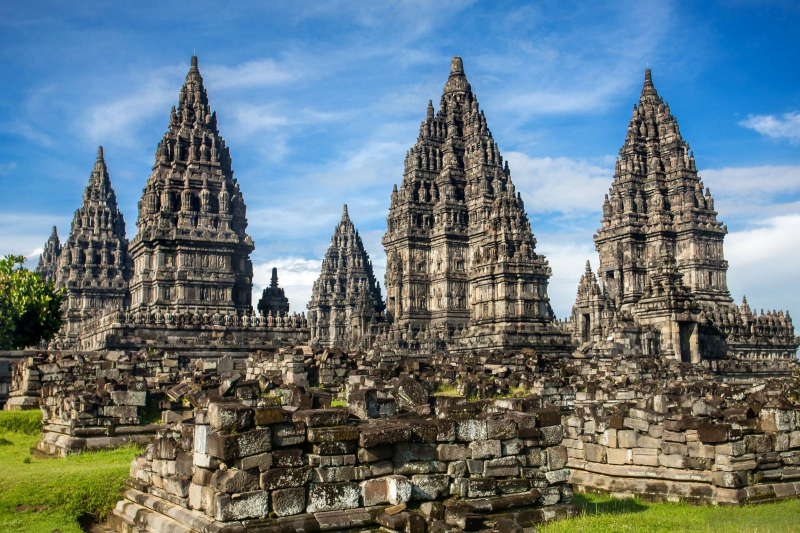
Photo: lonelyplanet 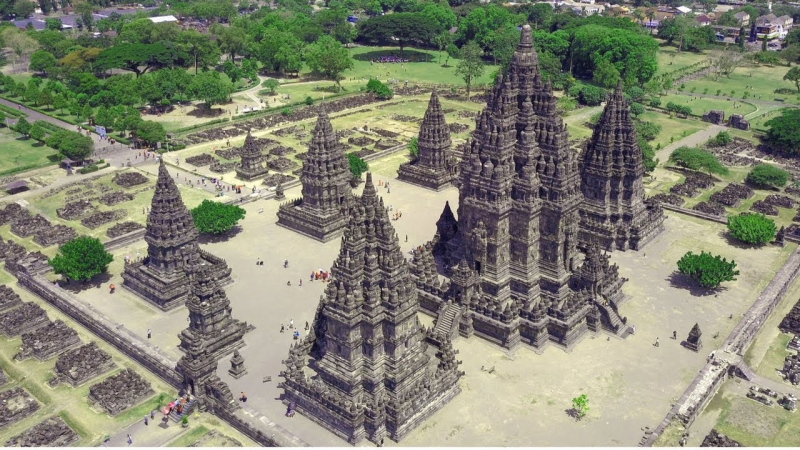
Photo: youtube -
The Sri Ranganathaswamy Temple is a Hindu temple in Srirangam, Tiruchirapalli, Tamil Nadu, India, dedicated to Ranganatha, a form of the Supreme God Maha Vishnu. The temple, built in the Hindu architectural style, is praised by Alvars in their Divya Prabhanda and holds the distinction of being the first of 108 Divya Desams dedicated to Vishnu, the Supreme God.
The temple complex covers 155 acres (63 ha) and has 81 shrines, 21 towers, 39 pavilions, and numerous water tanks, making it the world's largest functional Hindu temple. The temple town is an important archaeological and epigraphical site that offers a historical window into early and mid-medieval South Indian society and culture. Numerous inscriptions reveal that this Hindu temple acted not just as a spiritual center, but also as a major economic and benevolent institution that administered educational and hospital facilities, ran a free kitchen, and used gifts and donations to fund regional infrastructure projects.
The Sri Ranganathaswamy Temple is India's largest temple complex, one of the world's greatest religious complexes and one of the most beautiful Hindu temples. As a living temple, several of these structures have been maintained, expanded, and rebuilt over the years. The outer tower, which stands roughly 73 meters (240 feet) tall and was finished in 1987, is the most recent addition. Srirangam Temple is frequently referred to as one of the world's largest functional Hindu temples, with Angkor Wat being the largest existing temple. The temple is a functioning Hindu temple that practices Sri Vaishnavism's Thenkalai lineage. A million people attend the annual 21-day event held during the Tamil month of Margazhi (December–January).
Location: Srirangam, Tiruchirapalli, Tamil Nadu, India.
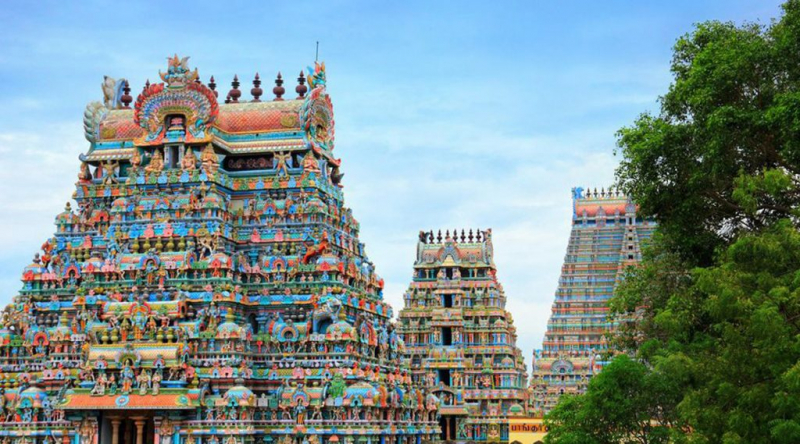
Photo: saneeswaratemple 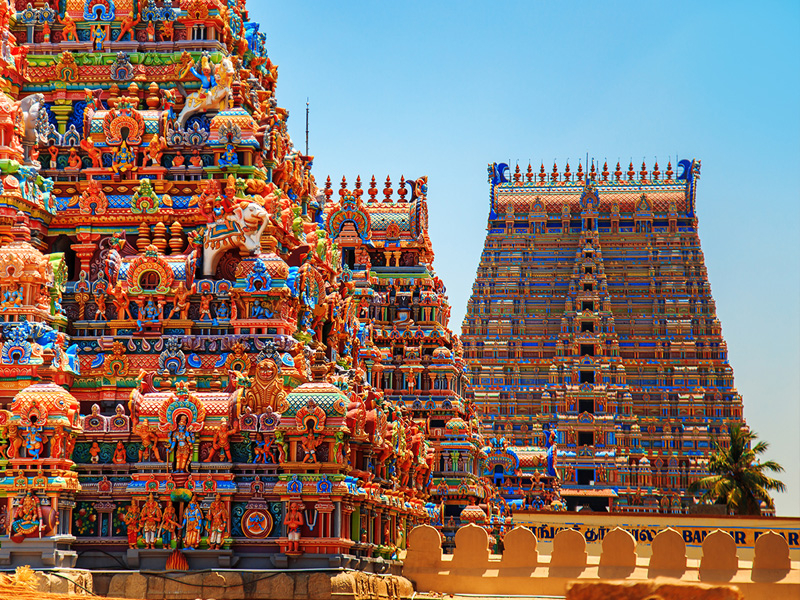
Photo: tamilnadutourism -
In Balinese, Tanah Lot translates to "Land Sea." The temple is located near Tabanan, about 20 kilometers (12 miles) northwest of Denpasar, on a big offshore rock that has been carved over time by the ocean tide.
Dang Hyang Nirartha, a 16th-century artist, is said to have created Tanah Lot. During his travels around the south coast, he came across the picturesque setting of the rock island and chose to stay there. When other fishermen noticed him, they decided to buy him gifts. Nirartha then stayed on the small island for the night. Later, he urged the fishermen to erect a shrine on the rock because he believed it was a holy spot to worship the Balinese sea gods.The temple's principal deity is Dewa Baruna or Bhatara Segara, who is the sea god or sea force, and Nirartha is also worshipped here these days.
For generations, the Tanah Lot temple has been a part of Balinese folklore. The temple is one of seven sea temples that dot the coast of Bali. The sea temples were built in a chain along the south-western shore, each within sight of the next. The temple was heavily influenced by Hinduism, in addition to Balinese legend.
Venomous sea snakes are said to guard the temple from evil spirits and invaders at the base of the rocky island. The temple is purportedly protected by a giant snake, which was created from Nirartha's selendang (a type of sash) when he established the island.Location: : Beraban, Kediri, Tabanan Regency, Bali 82121, Indonesia
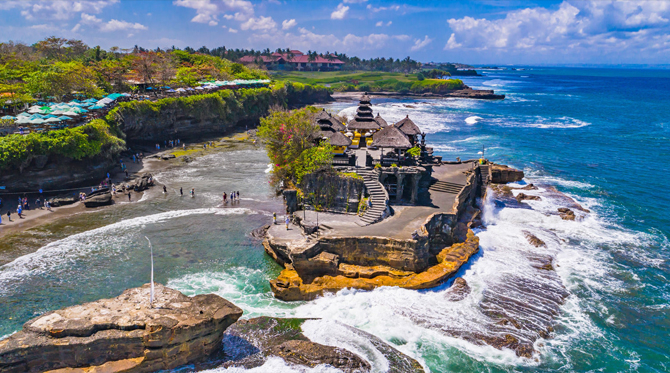
Photo: balicheapesttours 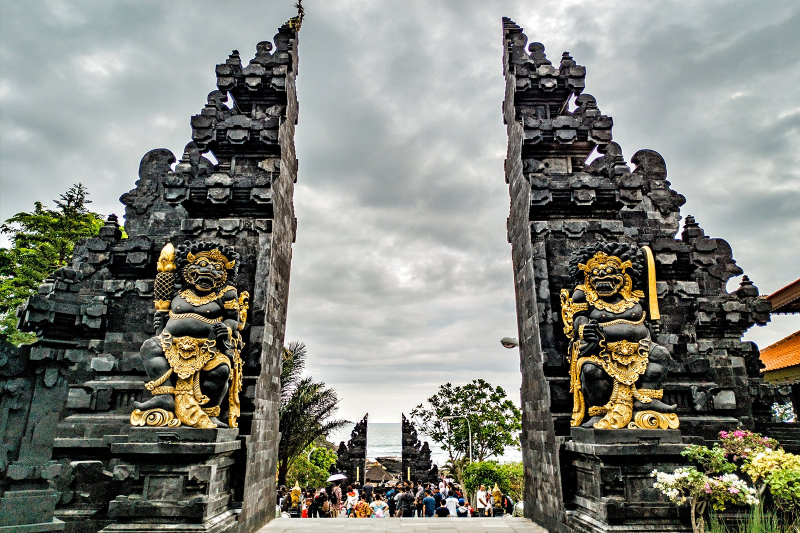
Photo: au.hotel -
Arulmigu Meenakshi Amman Temple, also known as Meenakshi Sundareshwarar Temple, is a medieval Hindu temple in Madurai, Tamil Nadu, India, located on the southern bank of the Vaigai River. It is dedicated to the goddess Meenakshi, a Parvati form, and her spouse Sundareshwarar, a Shiva form. The goddess temple is described in 6th-century CE documents and is located in the heart of the ancient temple city of Madurai, documented in Tamil Sangam literature. One of the Paadal Petra Sthalam temples. The Paadal Petra sthalam consists of 275 Shiva temples that are mentioned in Tamil Saiva Nayanar lyrics from the 6th to 9th centuries CE.
There are 14 spectacular towers in the complex, including two gilded "Gopurams" for the principal deities that reach to a height of 40 to 50 meters. These pyramidal gates, known as 'gopuras,' are intricately sculpted and decorated. The temple's four tallest gopuras serve as entrances, while the lesser gopuras lead to the primary shrines.
The temple's west tower (gopuram) serves as the inspiration for the Tamil Nadu State Emblem.
Location: Madurai Main, Madurai, Tamil Nadu 625001, India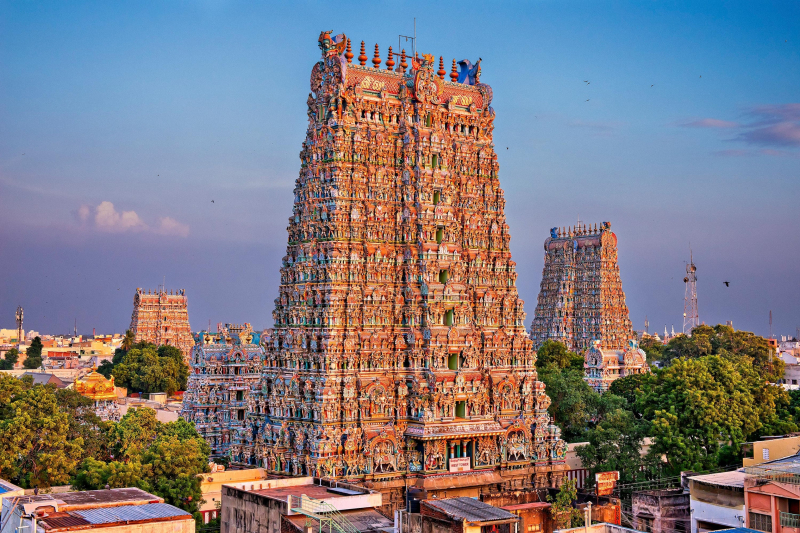
Photo: nationalgeographic 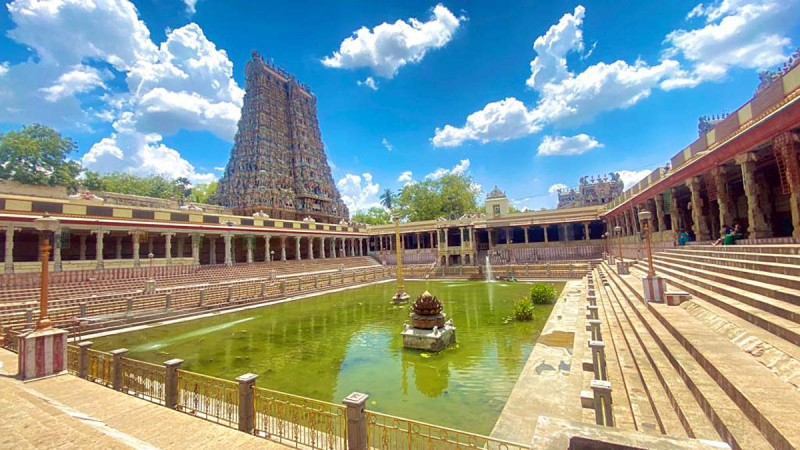
Photo: rediff -
Swaminarayan Akshardham is a Hindu temple in Delhi, India, as well as a spiritual-cultural campus. The shrine is located near the Noida boundary. The complex, which is also known as Akshardham Temple or Akshardham Delhi, exhibits millennia of traditional and modern Hindu culture, spirituality, and architecture. It was built by BAPS and was inspired by Yogiji Maharaj and produced by Pramukh Swami Maharaj.
The temple[2] was inaugurated by Pramukh Swami Maharaj on November 6, 2005, in the presence of Dr. A. P. J. Abdul Kalam, Manmohan Singh, L.K. Advani, and B.L Joshi. The Vastu shastra and Pancharatra shastra were used to construct the temple in the complex's heart.The main shrine is the focal point and preserves the central location of the entire complex in Swaminarayan Akshardham, identical to its predecessor Swaminarayan Akshardham in Gandhinagar, Gujarat. There are several display halls that present information on Swaminarayan's life and activity. The numerous display halls were designed using modern ways of communication and technology by the complex's designers.
The complex includes an abhishek mandap, Sahaj Anand water show, a thematic garden, and three exhibitions: Sahajanand Darshan (Hall of Values), Neelkanth Darshan (an IMAX film on Swaminarayan's early life as the teenage yogi, Neelkanth), and Sanskruti Darshan (an IMAX film on Swaminarayan's early life as the teenage yog (cultural boat ride). The word Akshardham means "abode of Swaminarayan" in Swaminarayan Hinduism, and it is thought by devotees to be God's temporal dwelling on earth.
Location: Delhi, India
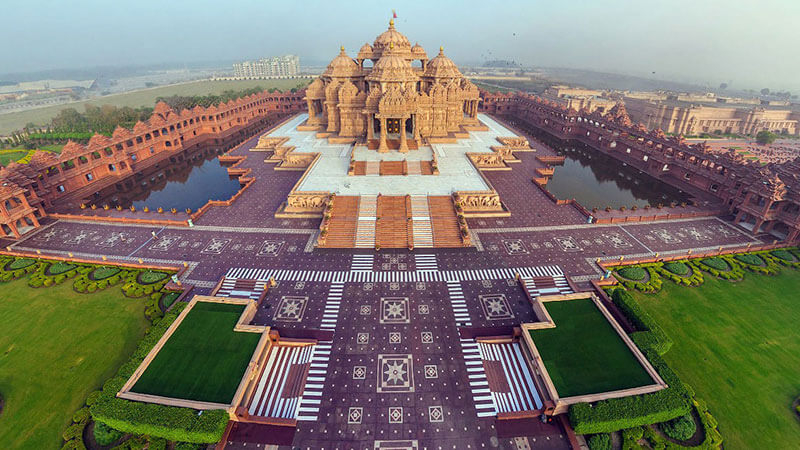
Photo: easemytrip 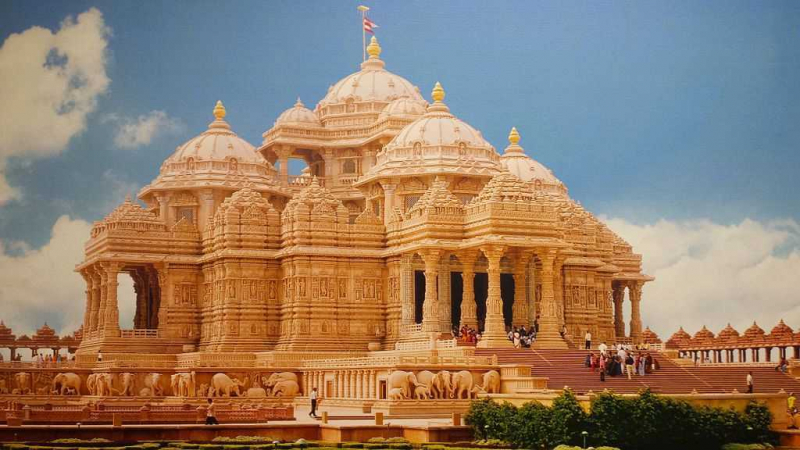
Photo: taxirajasthan -
The BAPS Shri Swaminarayan Mandir (also known as the Neasden Temple) is a Hindu temple in the London neighborhood of Neasden and it is seen as one of the most beautiful Hindu temples in the world. The Swaminarayan mandir has been dubbed Britain's first true Hindu temple because it was constructed entirely using traditional methods and materials. It was also the first traditional Hindu stone temple in Europe, as opposed to converted secular structures. It was founded in 1995 by Pramukh Swami Maharaj as part of the Bochasanwasi Shri Akshar Purushottam Swaminarayan Sanstha (BAPS) organization. The temple complex also includes a cultural center with an assembly hall, gymnasium, bookshop, and offices, as well as a permanent exhibition named "Understanding Hinduism."
This temple, which stands 70 feet tall, is built of 5,000 tons of Italian Carrara marble, Indian Ambaji marble, and the best Bulgarian limestone. Before being transported to London, it was totally carved by hand in India. It is well-known for hosting spectacular Diwali celebrations that are accessible to the public and include a fireworks display as well as hot refreshments.
Location: Neasden, London, NW10
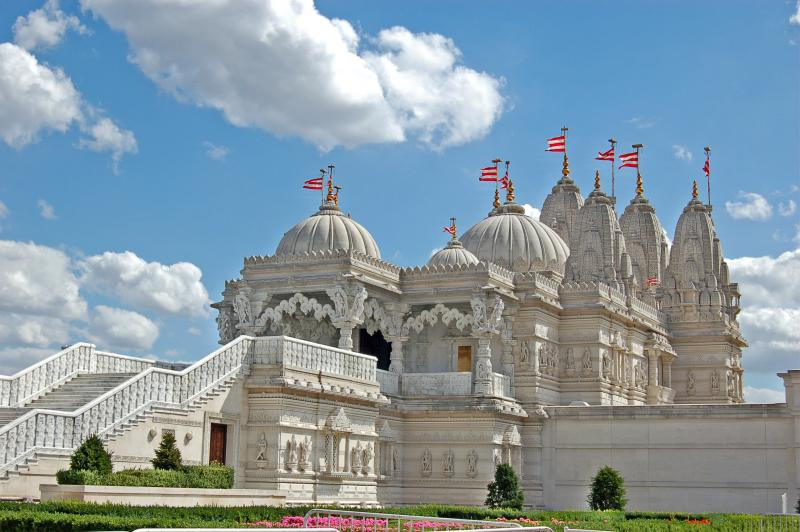
Photo: secretldn 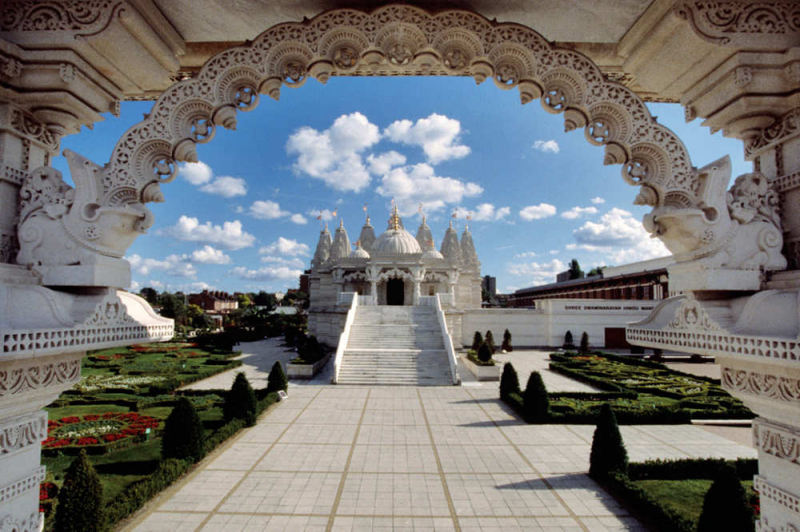
Photo: diaryofalondoness -
The Golden Temple Vellore complex, which is part of the Thirupuram spiritual park, is located at Thirumalaikodi (or simply Malaikodi) Vellore in Tamil Nadu, India, at the foot of a short range of green hills. Tirupati is 120 kilometers away, Chennai is 145 kilometers away, Pondicherry is 160 kilometers away, and Bengaluru is 200 kilometers away. The temple and its principal deity, Sri Lakshmi Narayani or Maha Lakshmi, the goddess of wealth, were consecrated on August 24, 2007, and worshippers of all faiths and backgrounds are welcome to come.
The Lakshmi Narayani temple, whose Vimanam and Ardha Mandapam are plated in pure gold and houses the deity Sri Lakshmi Narayani (female consort/wife of Vishnu Narayana), is the most prominent feature of 'Thirupuram.' The temple was built on 100 acres of land by the Vellore-based charitable foundation Sri Narayani Peedam, which is led by spiritual leader Sri Sakthi Amma, popularly known as 'Narayani Amma.'
The elaborate work on the temple's gold covering was done by experts who specialize in temple art employing gold. Every detail, including transforming gold bars into gold foils and then mounting the foils on copper, was done by hand. The etched copper plates have been covered in gold foil ranging from 9 to 10 layers thick. Every single detail in the temple art has significance from the Vedas.Sripuram's architecture includes a star-shaped path (Sri chakra) that runs for almost 1.8 kilometers through the lovely green countryside. One can read numerous spiritual messages along the route as one walks down this 'starpath' to reach the temple in the middle, such as the gift of human birth itself and the worth of spirituality.
Location: Thirumalaikodi, Vellore District
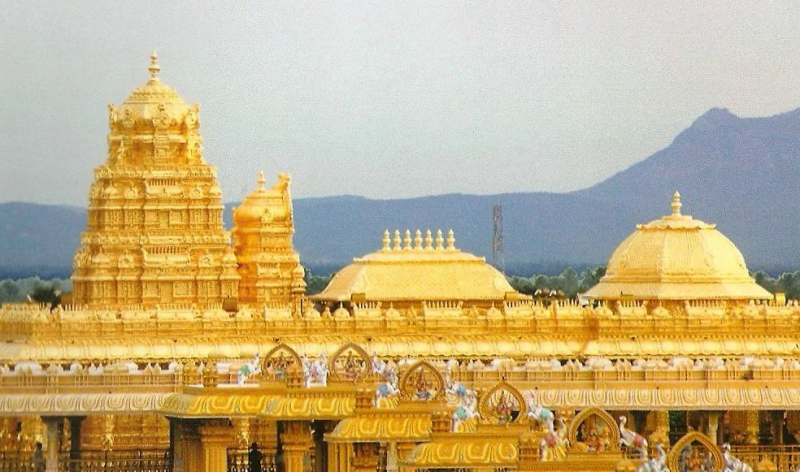
Photo: templetravel 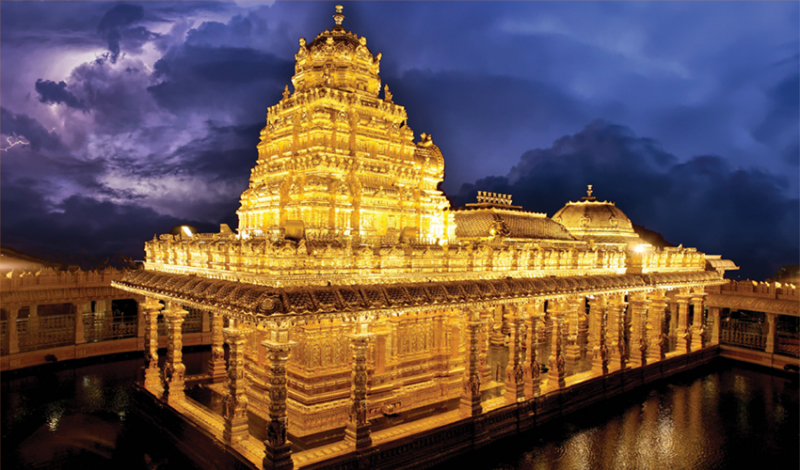
Photo: sripuram -
Trincomalee's Koneswaram temple, also known as Thirukonamalai Konesar Temple – The Thousand Pillars and Dakshina-Then Kailasam, is a classical-medieval Hindu temple complex in Trincomalee, a Hindu religious pilgrimage center in Sri Lanka's Eastern Province. The most sacred of Sri Lanka's Pancha Ishwarams, it was constructed on top of Konesar Malai, a peninsula overlooking Trincomalee District, Gokarna Bay, and the Indian Ocean, during the rule of the early Cholas and the Five Dravidians of the Early Pandyan Kingdom. Its Pallava, Chola, Pandyan, and Jaffna designs indicate the Vannimai region's continuous Tamil Saivite influence from the classical period. The major Shiva shrine in the monument is in the form Kona-Eiswara, shortened to Konesar. The temple, which is connected at the mouth of the Mahavilli Ganga River to Shiva's footprint at the river's source, Sivan Oli Padam Malai, symbolizes crowns the flow of the Ganges River from Shiva's head of Mount Kailash to his feet.
The first kovil, built in 205 BC, incorporated fundamental components to construct its basic Dravidian temple plan, including as the thousand-pillared hall – "Aayiram Kaal Mandapam" – and the Jagati, which King Elara Manu Needhi Cholan enlarged. Extensive sculptural bas-relief ornamentation covered a black granite megalith, while its several gold-plated gopuram towers were enlarged in the medieval period, making it the largest building of its time for architecture. It was one of three important Hindu shrines with a gigantic gopuram tower on the promontory, and it stood prominently on the cape's greatest prominence.
The Mahabharata, Ramayana, and Yalpana Vaipava Malai all mention the Mattakallappu Manmiam as a popular bay temple on the island, confirming its hallowed importance for all Hindus. In Saivite respect, the temple is compared to Thillai Chidambaram Temple and Mount Kailash in Kachiyappa Sivachariar's Kanda Puranam. Some experts believe that the worship of the great god Eiswara atop the promontory is the most ancient type of worship still practiced today.Location: Swami Rock (Kōṇāmalai), Trincomalee, Sri Lanka
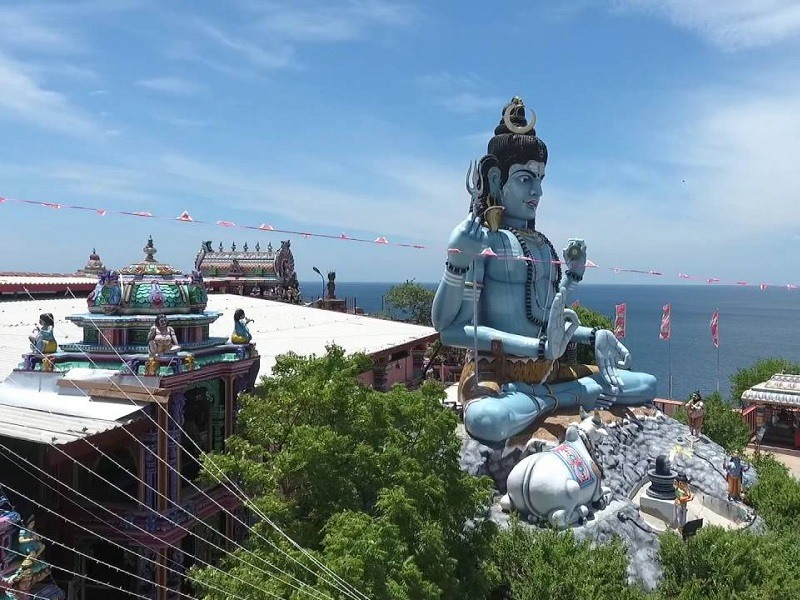
photo: trawell 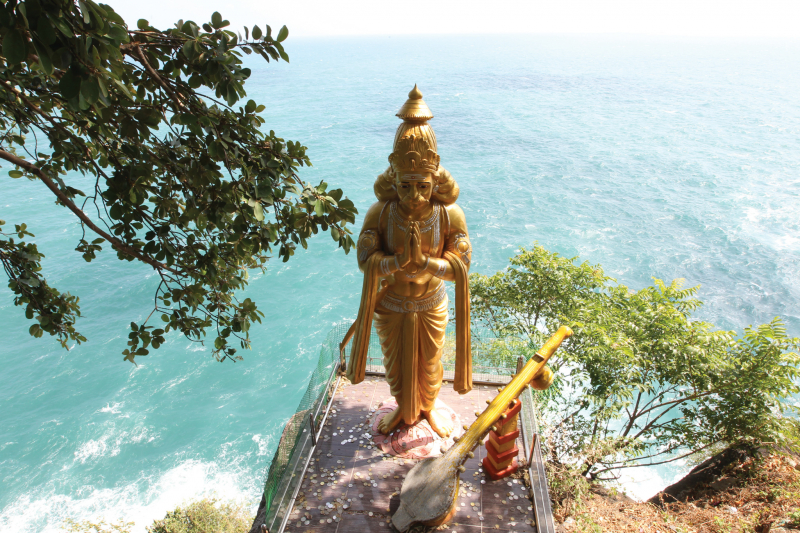
Photo: timeout -
Virupaksha Temple is located in Hampi, Karnataka, India, in the Ballari district. It's part of Hampi's Group of Monuments, which is a UNESCO World Heritage Site. Lord Virupaksha, a form of Shiva, is honored in this temple. The temple was established by Lakkan Dandesha, a nayaka (chieftain) under the Vijayanagara Empire's emperor Deva Raya II, also known as Prauda Deva Raya.
The Vijayanagara empire's capital, Hampi, is located on the banks of the Tungabhadra River (Pampa hole/Pampa river). The main center of pilgrimage at Hampi is Virupaksha Temple, which has long been regarded as the most sacred sanctuary. It is still utilized in worship despite being surrounded by ruins. The temple is devoted to Lord Shiva as the consort of the local goddess Pampadevi, who is related with the Tungabhadra River and is known as Virupaksha/Pampa pathi. In the village of Nalagamapalle, Chittoor district, Andhra Pradesh, around 100 kilometers from Tirupati, there is also a Virupakshini Amma temple (mother goddess).
Location: Hampi (Pampa Kshetra), India
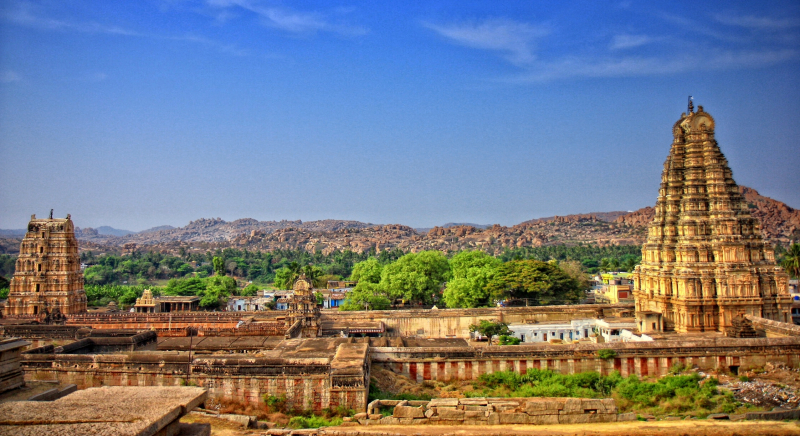
Photo: wikipedia 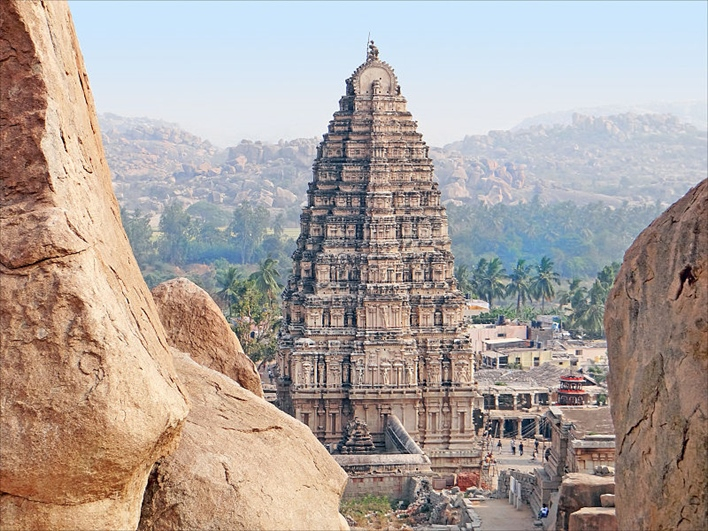
Photo: karnataka












